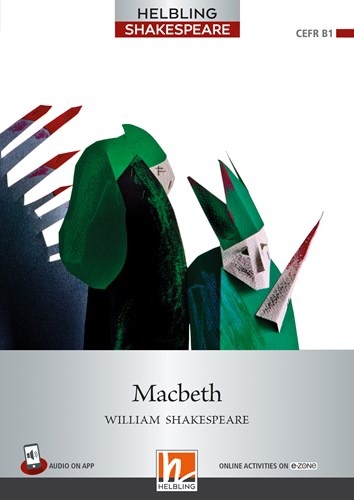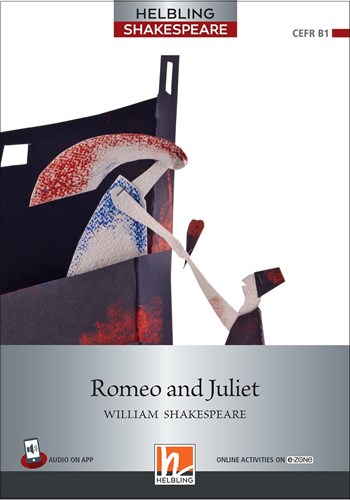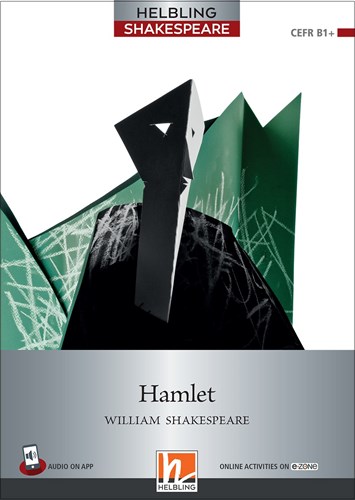Bringing Shakespeare into the classroom
Sponsored advertorial by Helbling English: Helbling Shakespeare Series
How often have you quoted famous lines from Shakespeare’s plays? ‘To be, or not to be: that is the question’. ‘O Romeo, Romeo, wherefore art thou Romeo?’ Whether or not our students have read Hamlet or Romeo and Juliet, they have certainly encountered quotes from these plays. Shakespeare’s language has also pervaded our everyday language with expressions and idioms such as ‘wild goose chase’, ‘green-eyed monster’ and ‘good riddance’. These vast linguistic and cultural resources should not remain untapped in any language classroom. And the most effective way to work with them is to turn to the Bard himself.

Working with Shakespeare’s words
The Helbling Shakespeare series, edited by Deborah J. Ellis – currently available titles are Macbeth (B1 level), Romeo and Juliet (B1 level) and Hamlet (B1+ level) – helps teachers who would like to work with the plays without throwing their students in at the deep end. The different sections of the books ease the students into the selected scenes by building up the cultural, historical and linguistic background and working with the four basic skills. The language development areas are based on Shakespeare’s original words, and get the students to use them in everyday language. There is nothing as empowering as the achievement of having worked with an original piece and this friendly scaffolding allows students to sample Shakespeare’s rich language and play with his puns and idioms in a manageable and fun way.

Each chapter starts with an annotated selected scene and activities to Understand and Analyse the original text. The Vocabulary Building and Test Yourself sections revisit language structures and lexical units they have encountered. In addition, there are research activities which create opportunities for independent learning and encourage students to explore the themes of the plays. At the end of each book, the Review and Exam Practice activities further consolidate the new language and knowledge.
Universal themes that never cease to intrigue
The neverending popularity of Shakespeare’s plays is based on the universality of their themes. We have all caught ourselves contemplating the questions of life and death, forgiveness and revenge, love or hate, and such philosophical questions are not alien to our teenage learners either. Still, reading Shakespeare can be a daunting task for both language learners and their teachers. However, providing enough scaffolding and background information helps language learners not only to broaden their vocabulary but also to become more knowledgable in English. Some understanding of Shakespeare’s works and their cultural background is just as important as language structures at intermediate level. Each chapter introduces either a cultural or historical aspect from Shakespeare’s world connected to the selected scene.

Focus on performing
Shakespeare originally wrote for the stage. In other words, his plays were designed to be performed in front of an audience. The Helbling Shakespeare series provides an opportunity for language teachers who want to engage their students in interacting in English. Each chapter has a From Reading to Performing section which transforms the classroom into a stage and on Helbling e-zone there is a video-lesson and notes on how to go about performing Shakespeare in class. Students will become familiar with stage directions, props, set design, costumes, performance techniques, gestures and body language. Every student will find an important role in the creative process either on stage or behind the curtains.

Digital resources to enhance the learning experience
On Helbling e-zone in addition to Cyber Homework, teachers can find videos with 2nd language (L2) secondary school students performing scenes from the plays. The videos encourage students and inspire class performances. There are also easy-to-read scripts to print out for class performances, worksheets, extra reading and stage templates to help teachers to prepare for Shakespeare lessons. The full dramatized audio of the original speeches are available on both the e-zone and the Helbling Media App (downloadable from the Apple App Store or Google Play), making the plays even more accessible.
Beauty on the pages
The beauty of Shakespeare’s language is heightened by classical paintings, special illustrations and original stills from both classic and modern films and stage productions to bring the different styles of Shakespeare adaptations closer to the students.
Giving students direct ownership of Shakespeare’s plays opens doors to the wider cultural influences of his works. And having a deeper understanding of the English language will make both teachers and their students more critical and comfortable when working with the language.

The content for this page was paid for and provided by Helbing English
Comments
Write a Comment
Comment Submitted